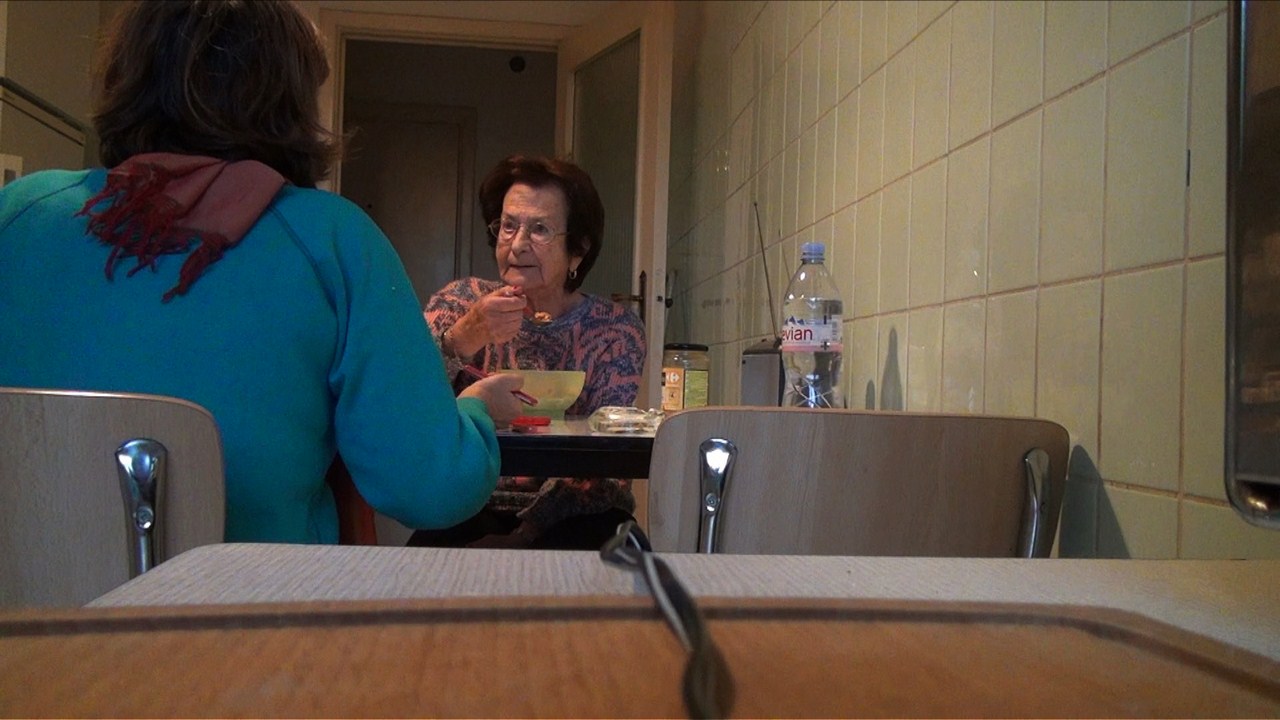The entire filmography of Chantal Akerman is a series of breaths, and No Home Movie is among her breathiest.
This is transparently the kind of eye-rolling claim that makes people tune out — why, after all, should anyone watch or listen to a series of breaths? Why do we go to the movies, anyway? Probably not to hear breathing, on screen or off. If anything, we want to be held breathless. To be transported. Akerman was always destined, then, for a small, devout crowd. Her focus was on deconstruction, questioning, embodiment, tenuousness. Her films breathe.
No Home Movie is her final film: its subject, her mom Natalia, would be dead shortly after it wrapped; Akerman would be dead by her own hand shortly after its premiere.
It’s as painful and beautiful as cinema comes: composed of her typically static shots and, less typically, involved, intimate conversation, No Home Movie is compulsively watchable and almost impossible to absorb. With the camera arranged just so, it feels like spying.
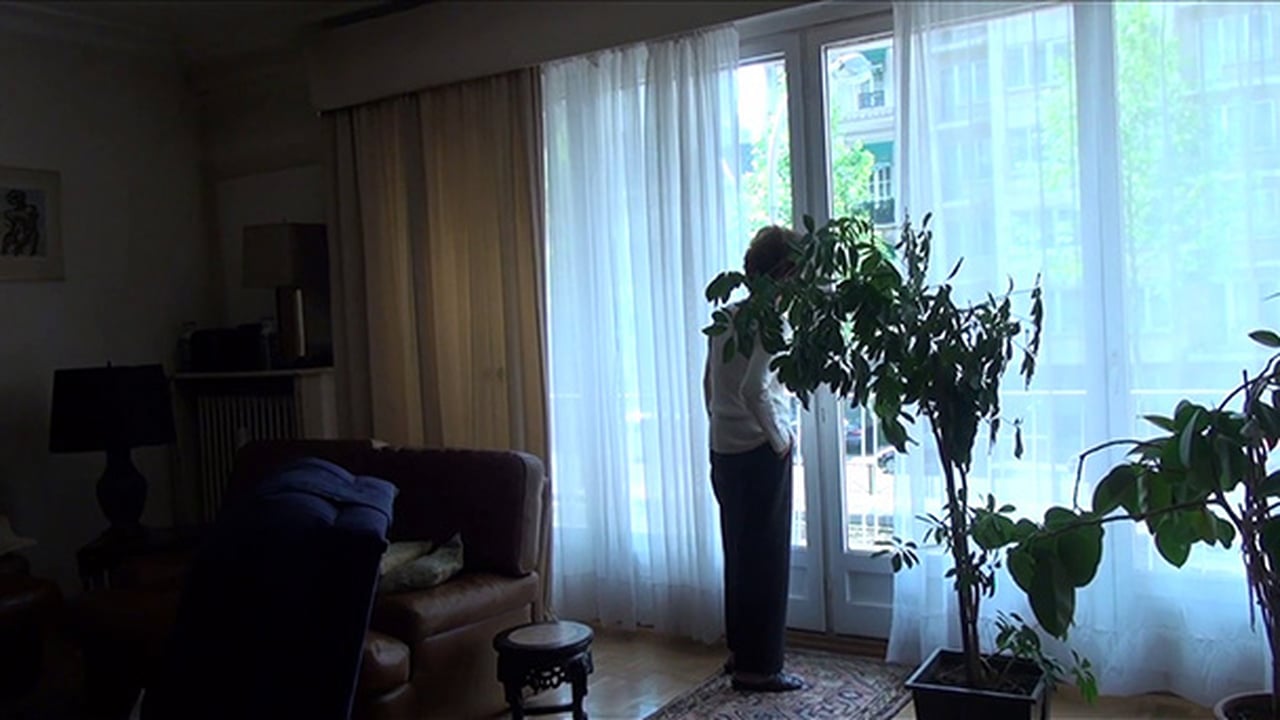
No Home Movie is a chronicle of Natalia’s final days. It doesn’t begin that way, but it becomes clearer and clearer, probably just as did for Chantal. The film itself is deceptive in his simplicity: just as in her enormously influential, feminist avant-garde masterpiece Jeanne Dielman, 23 Commerce Quay, 1080 Brussels, Akerman favors long shots, mundane details. We observe Natalia’s apartment, with its old trappings and beautiful furniture. We eat breakfast with the two of them, as they discuss the family history. Sometimes, we just stare at empty rooms.
I watched this film on a flight from the east coast of the U.S. to the west coast, after my father’s funeral the other day. Akerman’s long shots could so easily be read as “boring”, and I hesitate to recommend the film to people unfamiliar with her work. It probably is. But I was struck by its humanity, by its focus on absence and the way grief can manifest in small ways. A dresser can be an epic. A fluttering curtain can be an elegy. A Skype call can be a prayer.
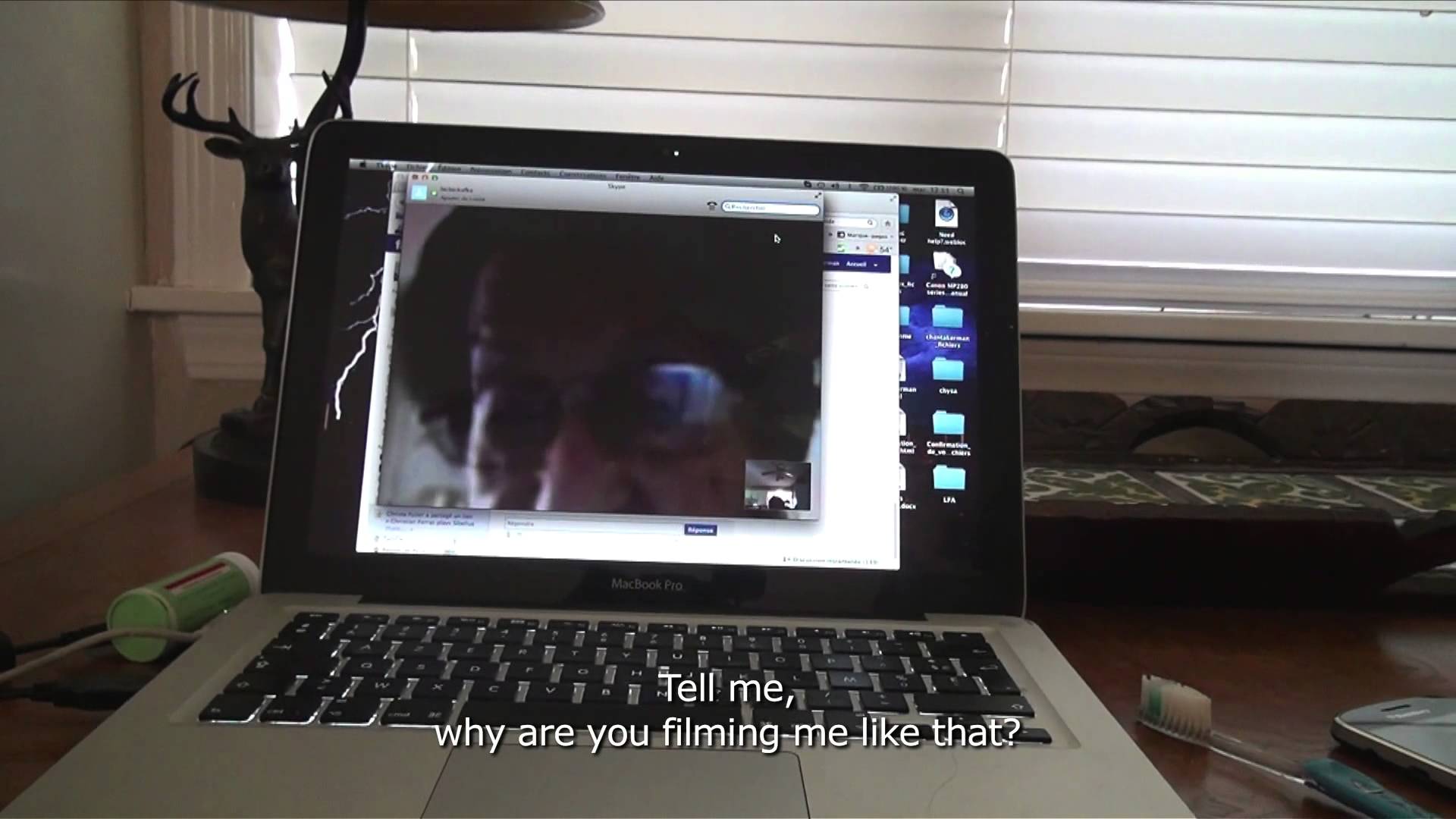
In his deeply-felt video eulogy, Scout Tafoya notes:
Akerman changed the way an audience relates to moving pictures by asking every member to consider what they would expect from a film. If you’re angry or upset that nothing is happening, ask why you believe that something should? Is film not a visual medium? Is an artist not meant to relay secret truths that only they seem able to divine? What do we value from the experience of sitting in the dark and communing with 35mm film running through a projector? And, more to the point, who is behind the camera?
I’ll add to Tafoya’s comment, which emphasizes two points of the triad: the writer and the text. There is, of course, also the reader. It is fashionable to allege that the text itself should stand on its own; it’s been fashionable for 50 years to assume auteurist intent. Aside from reader-response criticism, it’s never been particularly fashionable to focus on those of us who meet art where we find it. The job of the critic seems to be to decode what is already there, to silo our prejudices and reactions and simply determine “what it is all about.”
This is insipid, and a fundamental misunderstanding of art. As someone watching No Home Movie on the way home from a father’s funeral, I feel confident in dismissing such aesthetic piety out of hand. As it happened, I watched We Need To Talk About Kevin on my earlier flight, and couldn’t help thinking how different this would play if I had a kid. Who would argue with this? And why? Audiences are constitutive of texts. They need us more than we need them.
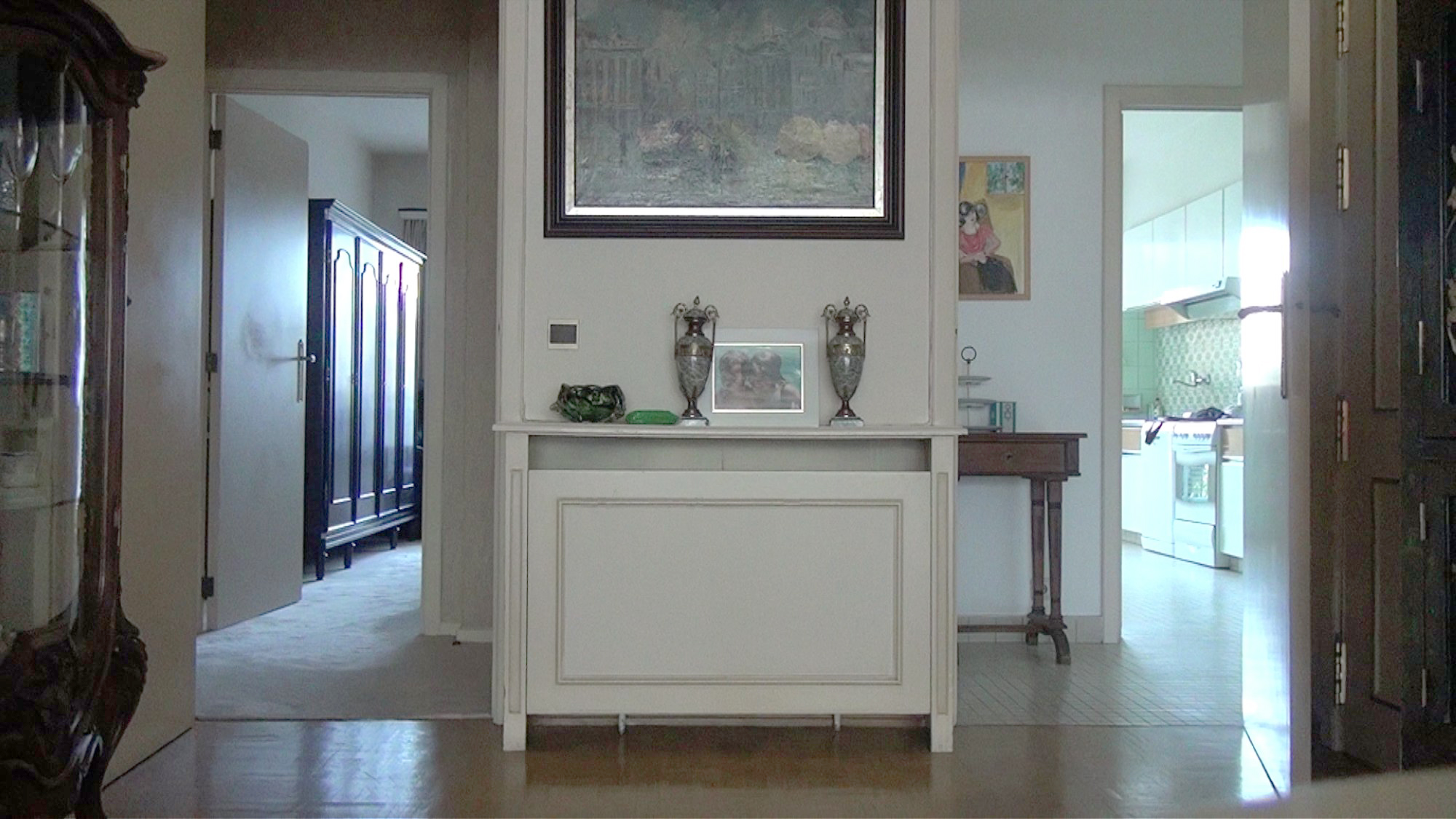
Except, of course, for when they don’t. Akerman — and No Home Movie in particular — is a challenge. At no point does the film seem to need an audience, or even desire one. Here is a series of tableaux — silent, talky, shot from a car window in transit, stationary in a kitchen corner — that is almost aggressive in its impassivity. But (paradoxes abound!) that impassivity is full of tenderness and rage and love.
We travel halfway through the film before Natalia even broaches the subject of her experiences in Auschwitz. Chantal never seems to press the issue, though she presses quite a few others, in that inimitable way grown children have with their parents. The camera never seems to shut off, and Natalia, as far as we can tell, never demands that it do so. The love between the two of them is palpable and fraught.
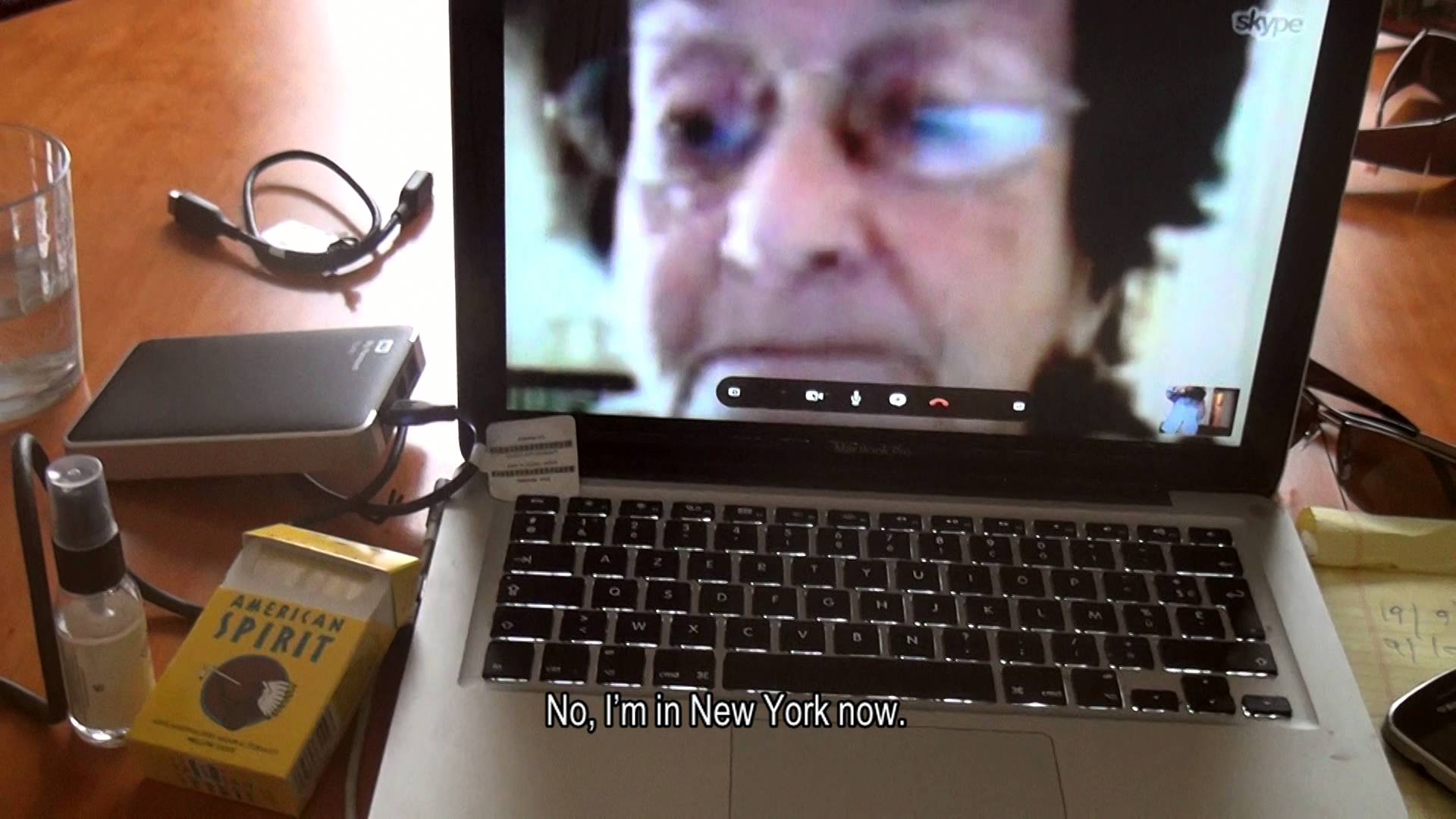
Watching this film as I did, at the moment I did, was appropriate. The labored breathing that marks its transitions matches the wind through the trees, which Akerman holds for 4, 5, 6, 7 minutes. This is, shall we say, not a film for the current moment, where everything is intricate narrative and every sentence spawns a sequel.
Instead, No Home Movie is a portrait of a family at a crossroads. We know how it turns out, or we can find out pretty easily. But Akerman’s camera captures everything in the pauses, in the rooms emptied of bodies, or the bodies quickly passing before the camera. We’re alive in these moments: it feels like we are there.
I can personally feel like I am there. I know this room, and now I know these people. Nothing explodes. There is no monologue, or catchphrase. But there are lives and places in which they are lived. We meet them where they are they at, we look for them and we find them there, sometimes.
When people ask why I like movies, that’s my basic answer.

